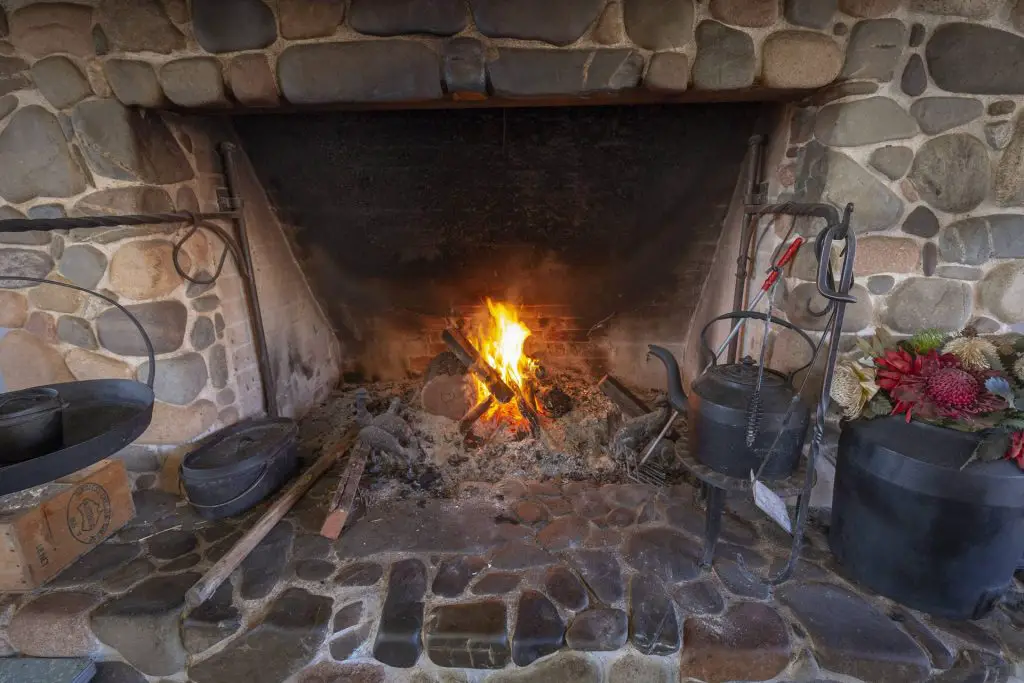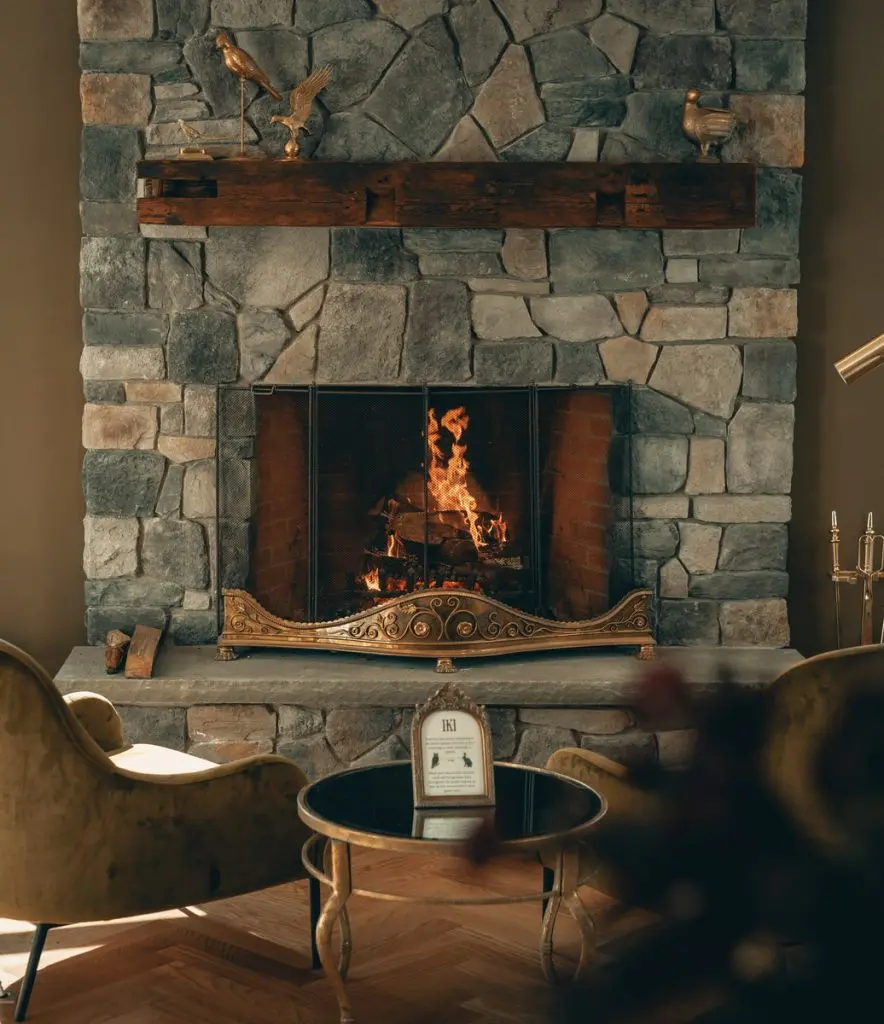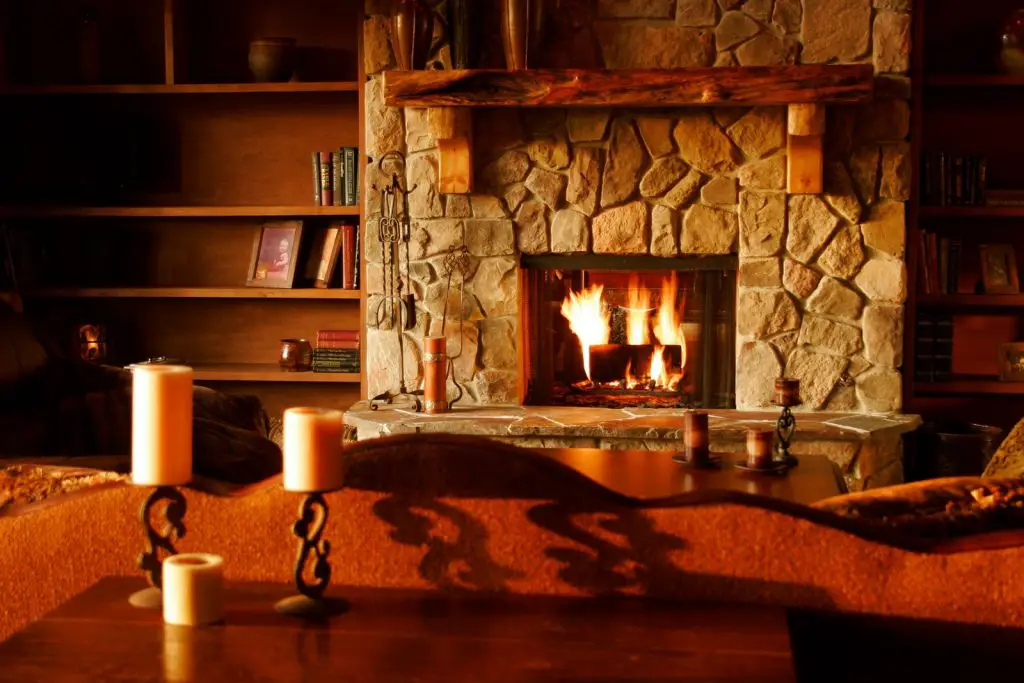Different types of organic rock-based organic rock-based fireplaces provide a beautiful backdrop to any home. Stone fireplaces are easy to maintain and offer a variety of benefits to those who choose them!
It is important to keep your fireplace clean because it is a focal point in the home. There are some easy steps that you can take to maintain your stone fireplace clean and remove any soot.
When it comes to the stone fireplace, you will need a vacuum cleaner with a crevice tool attachment, an old toothbrush, toothpaste, and water- but we’ve got more tips below to keep your rock hearth looking gorgeous.
One must still clean a fireplace regularly. Maintaining a clean fireplace not only makes it safer to use it is also more efficient and aesthetically pleasing throughout the burn season. The smoke being emitted and soot can waft out and leave the stone dingy. It is recommended that fireplaces and chimneys are inspected annually and, as needed, thorough cleaning carried out.
If a fireplace is left unkempt too long, you will need to call a stone-care professional to assess and address the damage, which is costly and can be avoided by regularly cleaning and dusting.
Contents
- Quick Cleaning Guide
- Common Types of Stains on Natural-Stone Fireplaces
- Fire and smoke damage:
- Moisture:
- Organic stains:
- How to clean a lime stain
- Ingredients to use for stone fireplace cleaning
- Cleaning a Stone Fireplace
- Stain Removal
- Sandstone Fireplaces
- Tips for keeping your fireplace clean:
- Precautions while cleaning stone fireplace
- Conclusion
Quick Cleaning Guide
Common Types of Stains on Natural-Stone Fireplaces
Below are some of the common more issues seen on stone fireplaces;
Fire and smoke damage:
It is the most common type of stain found on fireplaces, mostly on older natural-stone fireplaces. The damage usually looks black and very sooty.
Moisture:
Moisture on stone fireplaces forms efflorescence. The humidity can rise through the floor, the chimneys can leak, and puddles can develop in or near outdoor fireplaces. Efflorescence presents itself as a crystalline build-up looking like a powdery deposit of salts.
Biological stains: These stains are caused by algae, mold, moss, fungi, or lichens and are more likely to form on outdoor stone.
Unfortunately, the mark of a stain remains after the biological material has been removed
Organic stains:
These Stains come from organic materials like leaves, bark, insects, and bird droppings. Unfortunately, once removed, it will cause a pinkish-brown stain once the staining object has been removed from the stone. Consider giving it a whitewash if it’s too stained to be completely recovered.
How to clean a lime stain
Lime stains on your fireplace bricks are a sign that there was some water in contact with the bricks for a long time and caused corrosion. To remove these stains, one scrubs them off with cream of tartar mixed with water using a small brush. The mixture will react with the lime and turn it into a powder form. Wipe off the powder residue, and the lime stain should be gone.
Other possible stains are inorganic metal stains, paint stains spill from beverages, ink stains, and water build-up.
Ingredients to use for stone fireplace cleaning
- Gallon bucket
- Soft bristle brush
- Liquid dishwashing detergent
- Mixing bowl
- Water
- Trisodium Phosphate (TSP) heavy-duty cleaner – available at most hardware stores.
- Bleach
- Bucket
- Sponge
Cleaning a Stone Fireplace

To clean your stone fireplace, you create a soapy solution of warm water and your cleaning agent in the bucket if the fireplace is notably dirty.
Put on a pair of gloves and goggles to protect your hands and eyes before you begin cleaning, then lay down a tarp and cover the floor space around the hearth with towels as cleaning your fireplace can get messy and dirty water may splatter onto surrounding surfaces or furniture.
Begin by brushing off any dirt and soot from the fireplace then you can start cleaning the fireplace.
Mix the mild detergent with warm water, then apply it to the fireplace and hearth using the sponge and leave it for around fifteen.
Using clean, warm water, rinse down the fireplace and hearth repeatedly until all the detergent and dirt have been removed.
You will realize that some stains are difficult to remove and do not come out. Consider decorating it to distract from unremovable stains.
Stain Removal
During the initial cleaning process, some stains were not removed by the mild detergent.
Mix the TSP, or ammonia, with warm water. Apply it to the fireplace and hearth with the sponge. Use a scrubbing brush for tough stains while rubbing them as lightly as possible because you risk damaging the stone if you go too hard. Repeat the same process over and over, then rinse. The tougher stains will have been dealt with.
Finish your cleaning by sponging water over the stone to rinse off the cleaning solution. Then it would be best if you let the stone air dry before removing the plastic tarp. After cleaning the mantle, apply a stone sealer that will make it more stain-resistant.
Ensure there is a fresh flow of air due to the nature of strong TSP and strong ammonia, open windows before this cleaning stage begins.
Sandstone Fireplaces
We try to avoid chemical cleaners at all costs on sandstone fireplaces. This is because of the unique color of sandstone fireplaces. Chemical cleaners can cause discoloration and shouldn’t be used for cleaning.
Apply only warm water to the fireplace surface. Polishing is not recommended.
Remember to take care when cleaning any fireplace and always give them an extra rinse to remove any excess cleaning solutions.
Tips for keeping your fireplace clean:
- Reduce hazardous creosote build-up in your chimney by burning only seasoned firewood with low moisture content.
- Avoid using cleansers to clean your fireplace unless they are explicitly made for that purpose.
- Clean and remove ashes regularly to ensure plenty of air can still get to the firewood on the grate. It helps to ensure that the fire is more efficient, which helps to reduce heating costs.
- Avoid pouring water in the fireplace while putting on fire unless it is an emergency. This is because the water makes the ashes pasty, and cleaning the firebox becomes much more difficult.
- After all embers in the fireplace have been out for at least 12 hours, dust or vacuum the hearth area to prevent a hazardous build-up of soot and dust.
Precautions while cleaning stone fireplace
- Always test any cleaning solution in an inconspicuous spot before beginning the project. Then Wait 24 hours or at least until the test spot dries, before taking on the rest of the project. This is to avoid using the corrosive or reactive chemical solution on the fireplace and ensure it does not bleach or streak the stone.
- Ensure that you work on a cold fireplace. Do not attempt to clean a heated fireplace or one in use.
- Never attempt to clean a stone or brick fireplace with a flammable liquid as this might lead to an explosion of a flame.
Conclusion
By knowing the importance of maintaining and caring for your fireplace, you will have an easier time finding the best way to clean a stone fireplace.
There are many ways to clean a stone fireplace without tearing it apart. Sometimes, as per this article, just a simple routine and the right kind of maintenance will do and keep your Stone Fireplace clean.




